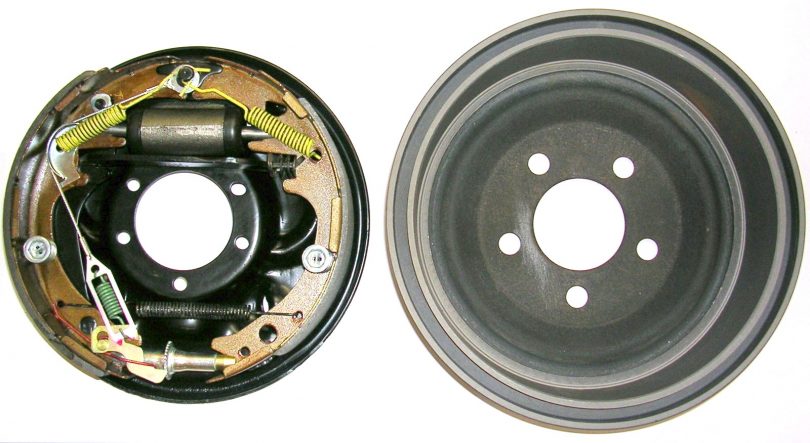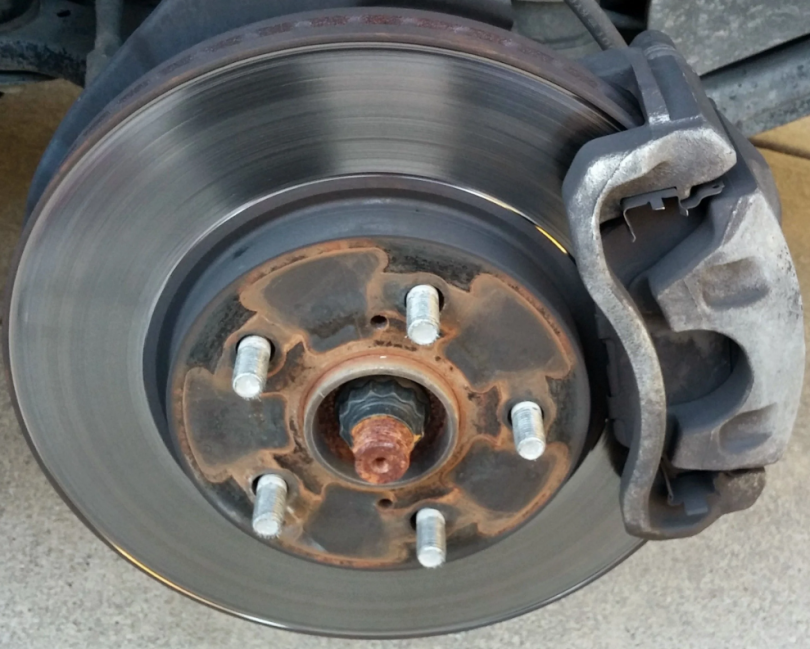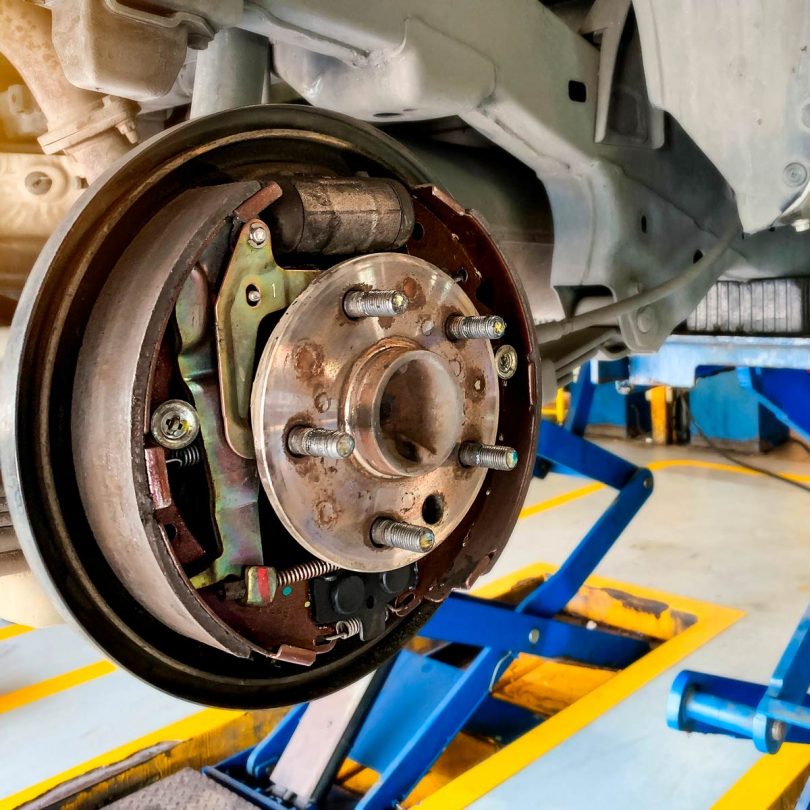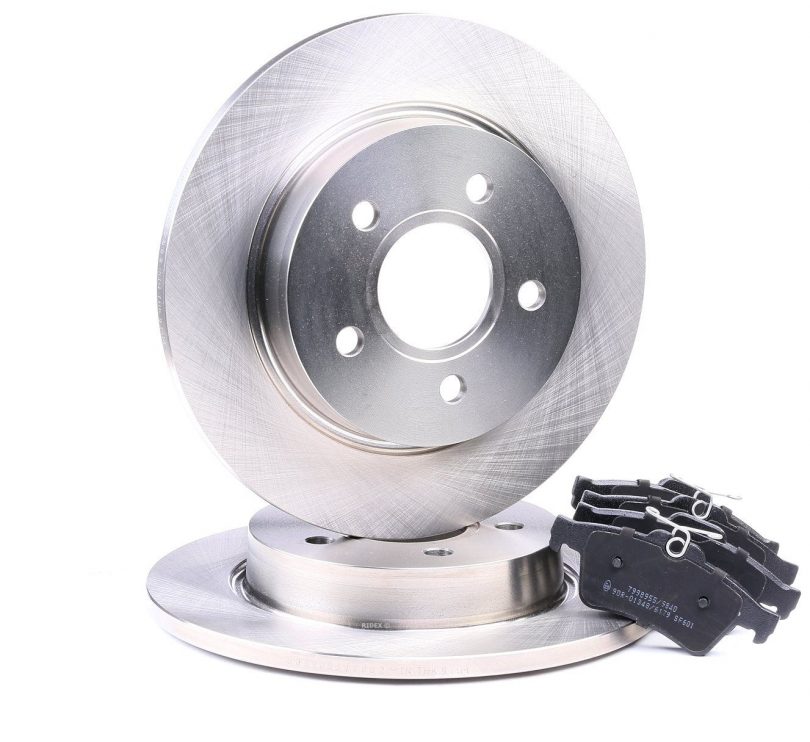It is relatively easy to argue that the brakes are the most important part of any vehicle. While it’s exciting to hit the gas and reach impressive speeds, such as the current land speed record of 1,227.985 km/h, it’s no good being able to go fast unless you can stop again.
That’s why it’s essential that you look after your vehicle. Regular servicing is essential to ensure it remains in top condition. If your brakes need servicing or you’ve never had them done then you need to click here and get a service booked in today!
It’s important to note that not all brakes are the same. The most common types on cars are disc brakes and drum brakes. The decision regarding which are fitted to your vehicle is usually made by the manufacturer. It’s common to find disc brakes on the front and drums on the rear, although modern cars are increasingly favoring discs all round.
The Difference between Discs & Drums

The disc brake is literally a disc that sits inside your wheel on the axle. The wheel is bolted to the disc ensuring the two spin together. When you want to brake a pad on each side of the disc is pushed against it, slowing and then stopping its forward rotation.
The pads are usually contained inside a caliper and will be moved by hydraulic force. To ensure the system works properly you’ll need enough brake fluid, and valves to control the flow and prevent it from going back to far which would allow air into the system.
If air enters the hydraulic system it will need to be bled to remove it or the brakes will not work efficiently.
Drums work in a different way. In this instance there is no disc, instead, there is a drum attached to your wheel. Inside the drum is a set of shoes, when you hit the brake pedal the shoes are forced outward onto the wall of the drum, slowing the wheel until it stops.
Advantages of Disc Brakes

A disc brake is more open to the air. The greater the airflow around the disc the better it will be as dissipating heat. As heat causes the metal to expand, excessive braking can warp the drums cause the braking power to fade. This is an issue with drum brakes but not one that disc brakes suffer from.
In effect, the disc brake will continue to brake at full force.
The heat can also cause vibration in a drum brake, that’s not an issue in a disc.
It’s also important to note that a disc brake disperses water efficiently and away from the disc. The grooved edge and smooth service deprive the water of somewhere to stay. This ensures braking power remains efficient.
In contrast, water can get inside the drum and sit there until the heat of braking causes it to evaporate. While the water is sat in the drum the braking mechanism will be less efficient and effective.
A disc brake work with hydraulic pressure to ensure the pads are pushed against the disc. Because the pressure is constant the system will adjust itself, even as the pads start to wear down. All you have to do is ensure that there is enough fluid in the reservoir under the hood, this will prevent air from getting into the system.
You’ll also appreciate the fact that you can see the discs and pads through the wheel without having to remove it. This makes it easier to monitor the brakes and spot any issues.
Advantages of Drum Brakes

Drum brakes are significantly cheaper to the manufacturer. They usually adopt an all-in-one design that can be created in the factory and installed n a very short space of time, ready to roll. The manufacturing method is easy to replicate and tweak, making this a much more cost-effective solution that disc brakes.
In fact, maintaining drum brakes is also very simple. A qualified mechanic can remove the outer part of the drum and replace the brake shoes in less than ten minutes while a brake pad replacement on disc brakes can take approximately one hour.
That means the drum brake is cheaper to buy and cheaper to fit, helping to keep your maintenance and servicing bills low.
The drum brake does provide a convenient spot to locate the parking brake mechanism. It works by adding a simple cable that clamps the shoes against the drum. When released the standard pedal action remains effective. This is not as easy to do with disc brakes. A separate mechanism needs to be created to stop the rear discs from moving, this adds to the cost.
Additionally, a drum brake works on a larger surface area than a disc brake, this effectively increases the force at which braking can be applied, even if brake fade is an issue.
Final Thoughts

It is worth noting that drum brakes are still effective although they generally experience brake fade if you’re braking hard or excessively. That’s the reason many manufacturers place drum brakes on the rear, they’re still effectively but much cheaper.
As two-thirds of the braking force is done by the front wheels, these are the ones that need brake discs in order to be efficient and effective.
It is possible to purchase a brake conversion kit, allowing you to change your drum brakes to disc. There are plenty of options available on the market, allowing you to choose the best possible brake discs for style as well as efficiency.
All braking generates heat and this heat can cause warping in drums as the evaporation of fluid in pipes, regardless of what type of brake you have. Maintaining braking force with drum brakes requires more effort. The excess heat can also cause glazing on the shoes which makes them less effective.
In short, for most vehicles, the most economic and practical option is disc front brakes and drum rears. But, you need to be aware of the importance of regular servicing to ensure your brakes remain in tip-top condition.
